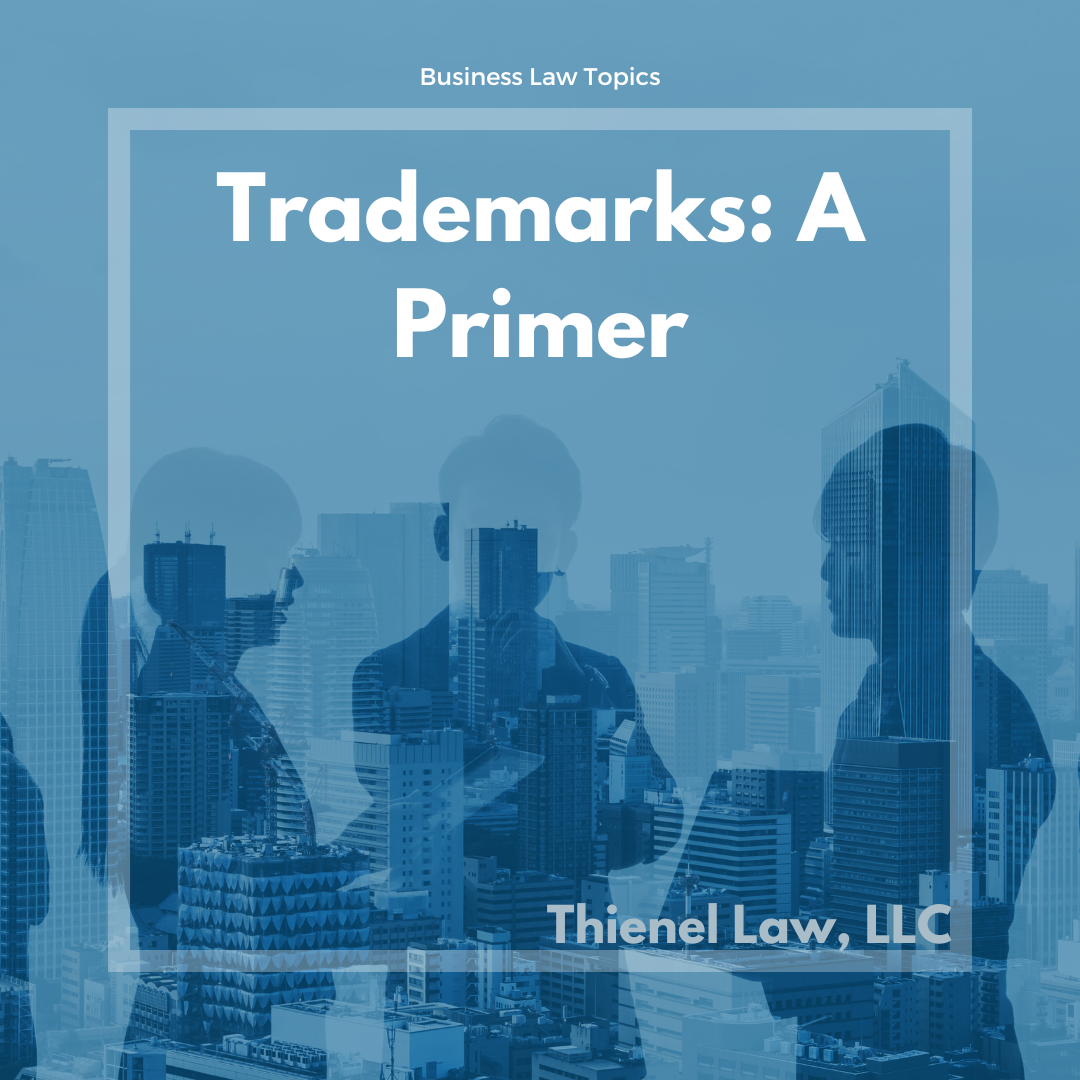Trademarks: A Primer
A common question clients ask attorneys is whether they need to file trademarks for their intellectual property. However, many people are unfamiliar with what trademarks protect, how to register a trademark, or how trademarks benefit their business.
Our Maryland business attorney answers these questions in this primer about trademarks.
What Is a Trademark?
A trademark is a word, symbol, design, or phrase that identifies a company’s goods and/or services. A trademark can combine any of these things or be a standalone word or symbol. They identify and distinguish the source of the product or service.
The term “trademark” generally refers to both service marks and trademarks. Trademarks are used to distinguish the source of the goods from competitors. Service marks distinguish services a company provides from companies providing the same or similar services.
You do not legally own a word or phrase used as a trademark for your business. Therefore, you cannot prevent others from using the word or phrase. However, you have the right to decide how the word or phrase is used with your services and goods. Also, if you register your trademark, you enhance your ability to enforce infringement rights if someone tries to use a mark too similar to your mark.
What Makes a Strong Trademark?
You want to put thought and effort into choosing your trademark or service mark. You want an inherently distinctive mark. When developing a trademark or service mark, consider these trademark types:
Fanciful Trademarks
Fanciful trademarks are made-up words. They mean nothing before they are associated with a product or service. Examples of fanciful trademarks include Starbucks®, Pepsi®, Exxon®, and Clorox®.
Because these words are invented, they only refer to one product or service. Therefore, when someone says or hears the word, they only think about that specific product or service.
Arbitrary Trademarks
Arbitrary marks are actual words. However, the words have no connection to the goods or services being marketed. For example, Amazon® is a river, but most people now think about online shopping when they hear the name. The name is unique to online shopping, so it could be registered for that purpose.
Suggestive Trademarks
Suggestive marks use words that suggest a specific quality of the goods or services. However, it does not outright state the quality. For example, Jaguar® suggests a fast automobile while KitchenAid® suggests its products can be helpful in the kitchen.
Descriptive and generic trademarks have no distinctiveness and might not be approved for federal trademark registration. The marks would need to acquire a secondary meaning, but even that might not make them a strong trademark for your products and services.
Owning a Trademark Is Different From Registering a Trademark
You own a trademark when you use it to distinguish your goods from similar products sold by competitors. Trademarks can be placed in any manner on the goods you sell.
You own a trademark by using the trademark. You established your ownership by placing the trademark on your goods. However, your rights are limited to the geographical area you provide your goods for sale. If you want more protection, you need to register the trademark.
A service mark is displayed in the advertising or sale of services. As with trademarks, you own the service mark when you begin using it. However, your rights are limited if you do not register the service mark.
The key point is a trademark or service mark is only protectable if you use it to distinguish the goods and services your company provides.
What Are the Benefits of Registering Trademarks and Service Marks?
A business owner may wonder why they need to go to the expense and trouble of registering a trademark if they own it when they begin using it. However, there are specific benefits of registering a trademark, including:
● A federal trademark registration with the United States Patent and Trademark Office (USPTO) creates trademark rights throughout the entire country and its territories.
● Registering a trademark expands your rights beyond the geographic area where you use the mark. You are not limited to enforcing your trademark rights in the area where you use the marks.
● Your federal trademark lasts as long as you continue using your trademark.
● Record registered trademarks with the U.S. Customs and Border Patrol to help stop products with an infringing trademark from being imported into the United States.
● The trademark is listed in the USPTO database, giving notice to anyone conducting a trademark search, which can reduce the chance of trademark infringement.
● There is a legal presumption you own the trademark when you have a USPTO registration certificate.
● You have the legal standing to file a lawsuit concerning your trademark in federal court.
● Grants you the right to use the ® symbol with your trademark.
Distinguishing your goods and services from other companies reduces confusion in the marketplace. Your customers and clients can quickly identify your products and services and spot imposters. In addition, using your mark in commerce can boost sales as your company's reputation becomes known throughout the marketplace.
How Do I Register a Trademark?
Federal registration begins with filing an application with the Trademark Office of the USPTO. A trademark attorney examiner processes your application. The examiner searches the USPTO database for similar registered trademarks. They also review your application and documentation to ensure there are no errors, mistakes, or issues with the information provided.
The examiner sends an Office Action to the applicant or their attorney. You must respond by the deadline. However, the sooner you respond, the sooner your trademark registration receives approval. The Office Action contains the examiner's concerns about the trademark and any problems with the application. A detailed response addressing each issue is crucial to gaining approval.
After an examiner approves the trademark, the mark is published in the Official Gazette, so people may file an objection to the federal registration if they believe the registration of the trademark will harm them. If no one files an opposition or any opposition filed is unsuccessful, the mark is registered.
If you were already using the trademark, the USPTO sends you a certificate of registration. If you have not begun using the trademark, you receive a notice you have six months to begin using the mark or request an extension and file documentation evidencing its use. If not, your federal registration application is denied.
You do not have to hire a lawyer to register a trademark. However, registering a trademark can be complicated and lengthy. The above information covers some of the basic steps in registering a trademark but does not explain the registration process in-depth.
Hiring a lawyer means you have someone who understands the process to conduct the research, complete the application accurately, respond to USPTO requests, and appeal USPTO decisions, if necessary. Your lawyer can also enforce and maintain your trademark rights.
Contact Our Maryland Business Attorney for More Information
Trademarks are valuable tools for businesses. We help clients register trademarks and act when someone uses your trademark without your consent. Call our law office to schedule a consultation with an experienced Maryland business attorney.


